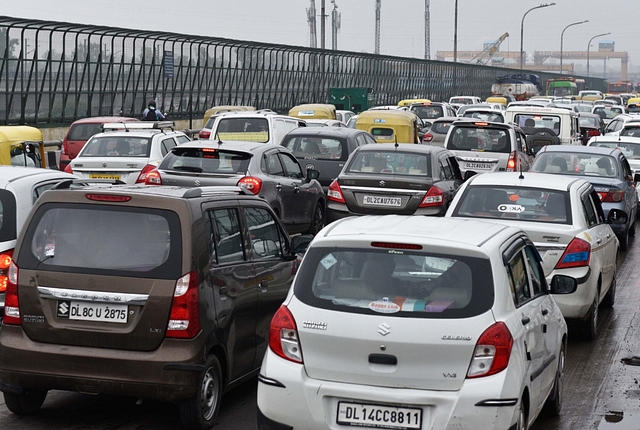
Five Reasons Why Automobile Sales Have Slumped
The drop in automobile sales is a cause for concern and hopefully the new government will address this issue.
Here are the key reasons why car sales have tumbled.
For the first time in eight years, car sales in India declined 16 per cent in April. Sales of two-wheelers also slipped by a similar margin in April. The 16 per cent fall in car sales comes on the heels of a meagre 2.4 per cent growth in sales during 2018-19 fiscal. Two-wheeler sales were 4.8 per cent in the previous fiscal.
The Society of Indian Automobile Manufacturers (SIAM) has said that this performance is the worst after the 2013-14 fiscal when sales slumped 6 per cent. The drop in sales is a cause for concern, though SIAM has projected a single-digit growth in sales of vehicles this financial year.
In April, SIAM predicted sales of passenger vehicles to grow between 3 and 5 per cent. Sales growth has been affected due to rise in prices of commodities like steel and aluminium, Parliament elections, a prolonged dry period affecting agriculture and a cut in repo rate by the Reserve Bank of India (RBI) in April.
In a presentation on its fourth quarter performance, Maruti Suzuki, India’s largest car company by sales, said its financials were affected by adverse impact of rising commodity prices and foreign exchange movement besides expenses towards higher depreciation and sales promotion.
R C Bhargava, Maruti Suzuki chairman, said that sales drop in the run-up to elections and then rise significantly in the election year. He pointed out at the 20 per cent growth during 2009-10 soon after the election and the 12 per cent growth soon after the 2014 elections.
The Maruti Suzuki official said that for no apparent reason, people don’t buy cars before elections and hoped the pattern witnessed in 2009 and 2014 will follow this year too. Bhargava has predicted 4-8 per cent growth in car sales this year.
Analysts feel car manufacturers’ strategy of rejigging the models slows down sales. In addition, automobiles will have to conform to the BS-VI emission norms from 1 April next year. They also have to comply with new mandatory safety norms like airbags, anti-locking brake system, parking sensors, seat belt reminders and speed warning alerts.
By 1 October, all automobiles will have to meet new crash test standards resulting in the manufacturers themselves scaling down production. In turn, buyers have chosen to put off their purchases.
Then, Maruti Suzuki’s announcement to discontinue diesel cars from April next year has come at a wrong time. Probably, it has more to do with the change in registration norms in the national capital region of Delhi, where diesel cars will be registered for 10 years only. This, to some extent, has affected sales of diesel vehicles. Probably, buyers expect some change in policies from the new government and that could have also contributed to sagging sales.
Analysts feel liquidity crunch crops up during elections and this affects both urban and rural buyers. In general, even sales of white goods like washing machines and refrigerators are also down as buyers are more concerned about the outcome of elections. Once they are confident about the new government, then purchases follow.
There is a fifth reason why automobile sales have dropped. Indications that automobile sales would be affected were available in October 2018.
Non-banking finance companies (NBFCs), which play a major role in financing the purchase of automobiles, particularly two-wheelers, have been facing liquidity squeeze for quite sometime now. NBFCs accounted for financing over 60 per cent of two-wheeler sales in 2017-18 fiscal. Their share in car sales was 17 per cent.
According to the Finance Industry Development Council (FIDC), NBFCs are facing many challenges in view of the liquidity crunch and new regulations imposed by the RBI.
The woes of NBFCs, which rely on banks for funding, began after IL&FS fiasco as banks became reluctant to provide funds. This has affected funding of auto dealerships by NBFCs, whose disbursements of automobile loans dropped 25 per cent during October-December 2018.
Things turned worse from 1 April this year since the RBI stipulated that 40 per cent of the funds extended by NBFCs should be in the form of working capital loans, leading to credit crunch. These companies face a stiffer challenge as the share of working capital loans will be 60 per cent from October.
Leasing can be one way by which sales can be improved. But it hasn’t taken off due to problems like higher goods and services tax and tax on lease rentals.
SIAM and FIDC have taken up their issues with the government. Hopefully, the new government will look into their grievances. It will be the key to better economic development since the automobile sector is an important segment of the manufacturing industry.